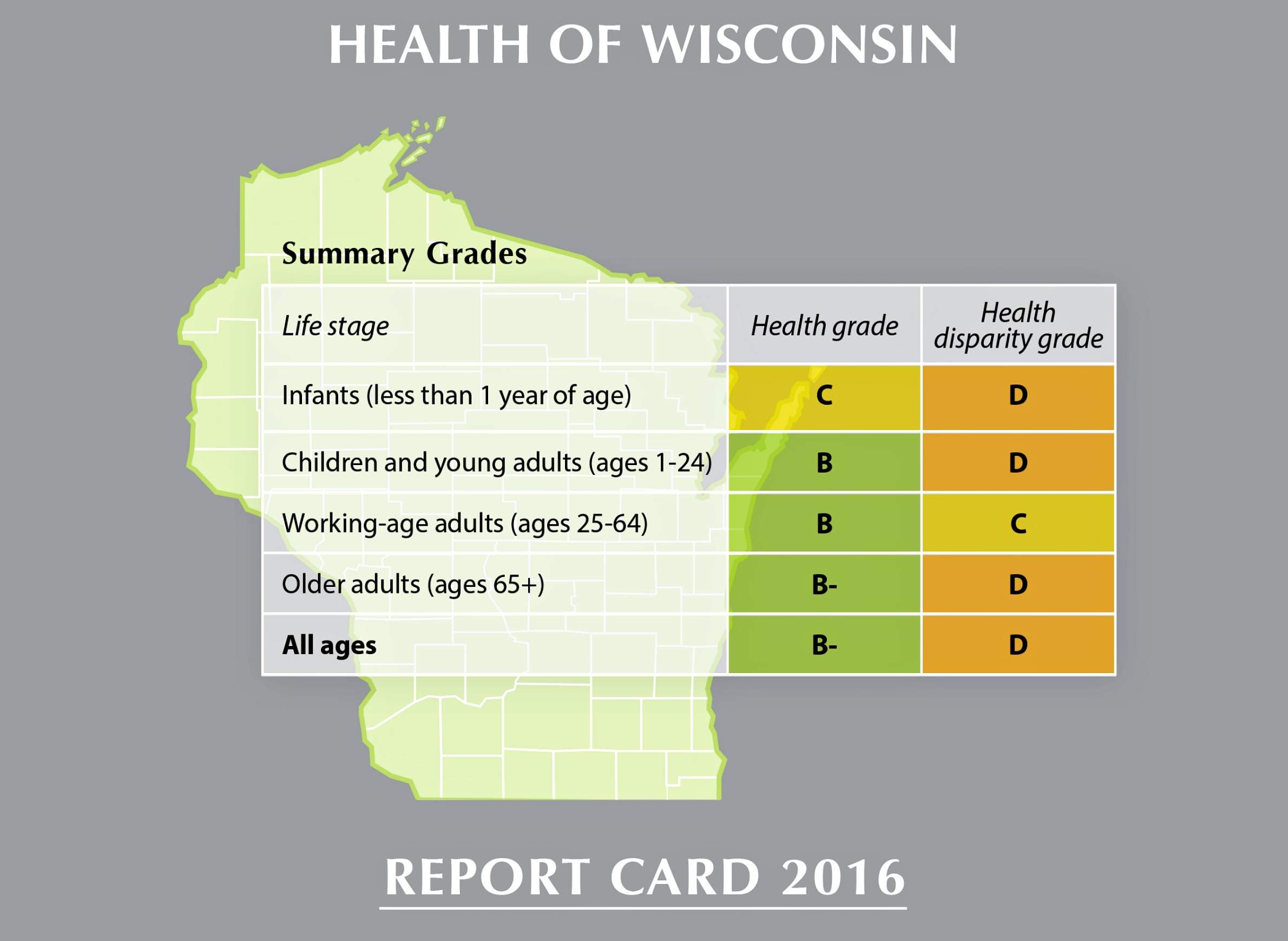
2016 State Health Report Card Shows Wide Disparities In Wisconsin
A new health report shows a lot of room for improvement in Wisconsin, especially for American minority groups and people without a college education.
Researchers at the University of Wisconsin Population Health Institute gave the state a B- on the 2016 health report card. It's a passing grade for the overall population, but a closer look at the numbers show health inequalities across the state, particularly among African-Americans, Native Americans and those who have a high school diploma or less.
The first report card was released in 2007 and subsequent reports have been issued every three years. Wisconsin’s grade for overall health has remained at a B- since 2007. However, the health disparities grade has changed from a C- in 2010 to a D in 2013 and 2016.
With the exception of working-age adults, Wisconsin's death rates have fallen for every age group, according to the report.
The report card grades health in two ways: length of life, which mostly considers mortality rates and quality of life, which was measured using Center for Disease Control and Prevention indicators that asks people how many days in the past month they have felt either physically or mentally unhealthy.
Dr. David Kindig, a professor emeritus at at the institute and founder of the Institute of Medicine Roundtable on Population Health Improvement, called the results discouraging considering how many resources are poured into public health care, and said Wisconsin is being outpaced by comparable states.
A decade ago, Kindig said Wisconsin was ranked as high as the sixth healthiest state in the nation, according to another national report card that's issued annually. Last year, Wisconsin ranked 24th and moved up four spots this year to 20th.
"We measure ourselves in comparison to all the other states, and many other states are improving better and faster than us," Kindig said. "We're down below where we would like to be, below Minnesota and North Dakota and some of the places we emulate and certainly think we should be doing as well as."
While the state as a whole scored slightly above average, some groups received failing grades.
African-Americans and Native Americans had significantly lower scores on nearly every measure. Additionally, those with a high school education or less scored nearly as bad and also received an F.
"Unfortunately, that's nothing new," said Kindig. "It's been that way for a long time. But we find for almost every measure for both the length of life and the quality of life really unacceptable low grades for Native American and African-American citizens."
Kindig said it's going to take a multidimensional approach to reverse course on state health outcomes. The institute's model stresses four critical areas for improving health, they include clinical care, health behaviors, social and economic factors, and the physical environment.
There is no silver bullet, said Kindig. But as a former pediatrician, he's seen the research that shows how critical the first 1,000 days of life are in laying down a pathway towards a happy and healthy life. Early childhood development would be a good place to invest in health care resources, he said.
Wisconsin Public Radio, © Copyright 2023, Board of Regents of the University of Wisconsin System and Wisconsin Educational Communications Board.


